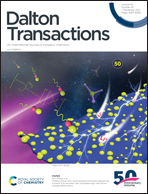Multifunctional ionic liquid-assisted interfacial engineering towards ZnS nanodots with ultrastable high-rate lithium storage performance†
Abstract
In this article, a new zinc-containing ionic liquid (IL) [HMMIm]2[ZnCl4] (HMMIm = 1-hexyl-2,3-dimethyl-imidazolium) is designed, which acts as a multifunctional source for the interfacial engineering of ZnS nanodots (NDs). Given the electrostatic interaction driven by the imidazolium cation, the steric effect of the alkyl chain, and the in situ released Zn ion from the IL, [HMMIm]2[ZnCl4] shows great advantages in controlling the formation of ZnS NDs. Based on this strategy, a nanocomposite consisting of homodispersed ZnS NDs anchored on sulfur/nitrogen dual-doped reduced graphene oxide (ZnS-NDs@SNG) is prepared. When evaluated as an anode material for lithium-ion batteries (LIBs), the nanocomposite delivers high reversible specific capacity, excellent high-rate performance, and superior cycling life. In particular, a discharge capacity of 648.1 mA h g−1 can be achieved at a high current density (10.0 A g−1) over 5000 cycles. Benefitting from the multifunctional IL and the simple synthesis protocol, the IL-assisted interfacial engineering strategy will enable a new avenue for the controllable synthesis of metal-sulfide-based anode materials.



 Please wait while we load your content...
Please wait while we load your content...